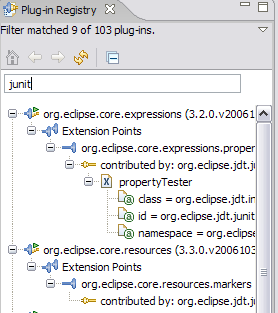After feeling like one of those people in the Lost TV series that disappears from the island… (was tracing some file handle leak problem from hell) I finished up an article regarding using and extending the OSGi console in Eclipse. For those who don’t know, launching Eclipse with the -console parameter can be a ton of fun (you can start and stop things and take down Eclipse in no time!). If you type help in the console, you’ll notice a ton of commands available. Ever wonder how to have your own command (can be useful in debugging situations regarding your specific service)? Well, wonder no more, here’s a simple example from the upcoming article (the important parts are implementing CommandProvider and prefixing commands as methods that start with the ‘_’ character):
public class Activator
implements BundleActivator, CommandProvider {
private BundleContext context;
public void start(BundleContext context) throws Exception {
this.context = context;
Hashtable properties = new Hashtable();
context.registerService(CommandProvider.class.getName(),
this, properties);
}
public String getHelp() {
StringBuffer buffer = new StringBuffer();
buffer.append("\tuname - framework information\n");
return buffer.toString();
}
public void stop(BundleContext context) throws Exception {}
public void _uname(CommandInterpreter ci) throws Exception {
String vendor =
context.getProperty(Constants.FRAMEWORK_VENDOR);
String version =
context.getProperty(Constants.FRAMEWORK_VERSION);
String osName =
context.getProperty(Constants.FRAMEWORK_OS_NAME);
String osVersion =
context.getProperty(Constants.FRAMEWORK_OS_VERSION);
System.out.println("\n " + vendor + " "
+ version + " (" + osName + " "
+ osVersion + ")");
}
The end result should look something like this:





